Today was Day Two of the Crisis and Creativity Symposium, a gathering of scholars and artists from across the country discussing creative approaches to a society in crisis. After a moving poetry reading from Brenda Hillman the previous night, participants were eager to begin today’s morning workshop with her.
Hillman introduced four concepts that she finds particularly helpful when thinking about how to write poetry. The first concept focused on her belief in the importance of multiple levels of experience, an idea inspired by her background in hypnotherapy. Using these ideas she has developed what she calls “trance-poetics,” a practice that is focused on finding the place where the unconscious self meets the unconscious of the culture. This is the place where healing and understanding can happen.
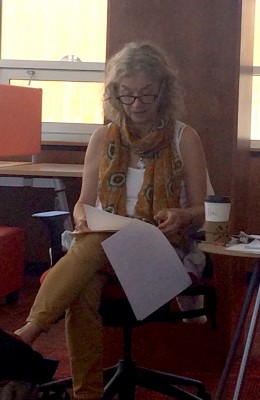
In order to demonstrate how to access this place, Hillman asked participants to go into a trance-like state for a couple of minutes and to revisit their childhood room in their minds. Participants were then asked to leave their room and to describe what they encountered. This meditative practice was relaxing and beautiful, a unique experience for each individual.
The second practice Hillman focused on was the idea of being aware of one’s relationship to words and phrases. She celebrates the words she is drawn to and picks apart the words that have become problematic in our society, words that have “betrayed” us. Having that acute awareness of how language shapes our perceptions and our reality is key to poetry.
The third concept Hillman discussed was the importance of interdisciplinary approaches to one’s work. This is a concept that will “leave you less isolated,” and is a practice that is fully being employed at the symposium as scientists, sociologists, poets, anthropologists, and artists are coming together to share ideas and create art.
Hillman’s last concept was the importance of taking direct action. As a social activist, this is something that Hillman finds essential to her art; she cannot separate the two. She called upon participants to become actively involved in creating social change by doing things that might make them uncomfortable. This might simply be calling a local representative or attending a city council meeting, but regardless, Hillman thinks these “uncomfortable” actions can help to destabilize the status quo.
Hillman ended the morning with a “field trip” to look at lichen growing on some rocks on campus. Hillman has always had a fascination with lichen. It is often ignored, but its abstract patterning is actually very beautiful and inspiring. Participants were all given an opportunity to view its beauty up close with a little magnifying glass provided by Hillman.

***
The afternoon Maker’s Space started with a partner activity using clay. Partners worked together to create representations of some of the problematic words that were discussed in the morning session. The creations were remarkable.
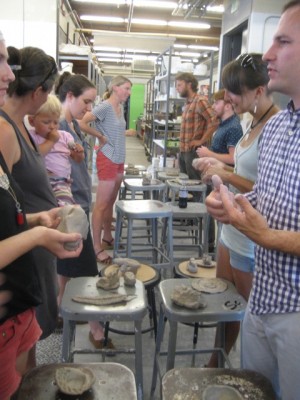
After this activity, participants were set loose to pursue whatever project struck their fancy. Some people sat in the shade and wrote. Others used the clay to create whatever came to their minds. Still others used lichen (from Hillman’s morning session) as their inspiration. It was a creative and productive afternoon.
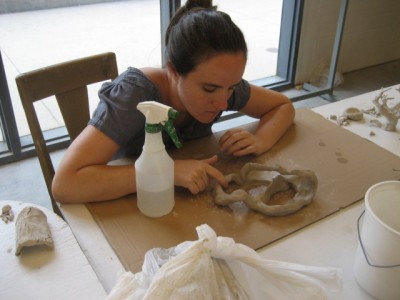
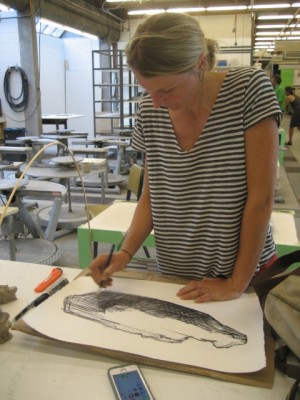
Following the Maker’s Space session, there was a “field trip” to the National Center for Genetic Resources Preservation (NCGRP) on campus. Associated with the Federal Department of Agriculture, the NCGRP’s mission is “to acquire, evaluate, preserve and provide a national collection of genetic resources to secure the biological diversity that underpins a sustainable U.S. agricultural economy.” Participants were able to see some of the storage vaults where thousands of seeds are stored and preserved in case of an agricultural crisis. One way that the NCGRP stores these seeds is in cryogenic storage containers, which use liquid nitrogen (-321°F/ -196°C) to preserve germplasm. In fact, the NCGRP is well known for pioneering the use of cryogenic technologies for agricultural genebanks.
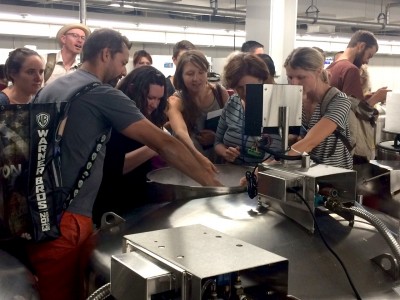
The field trip to the NGCRP was an interesting contrast to the more artistic activities of the morning and a great way to integrate an interdisciplinary approach to the idea of crisis.